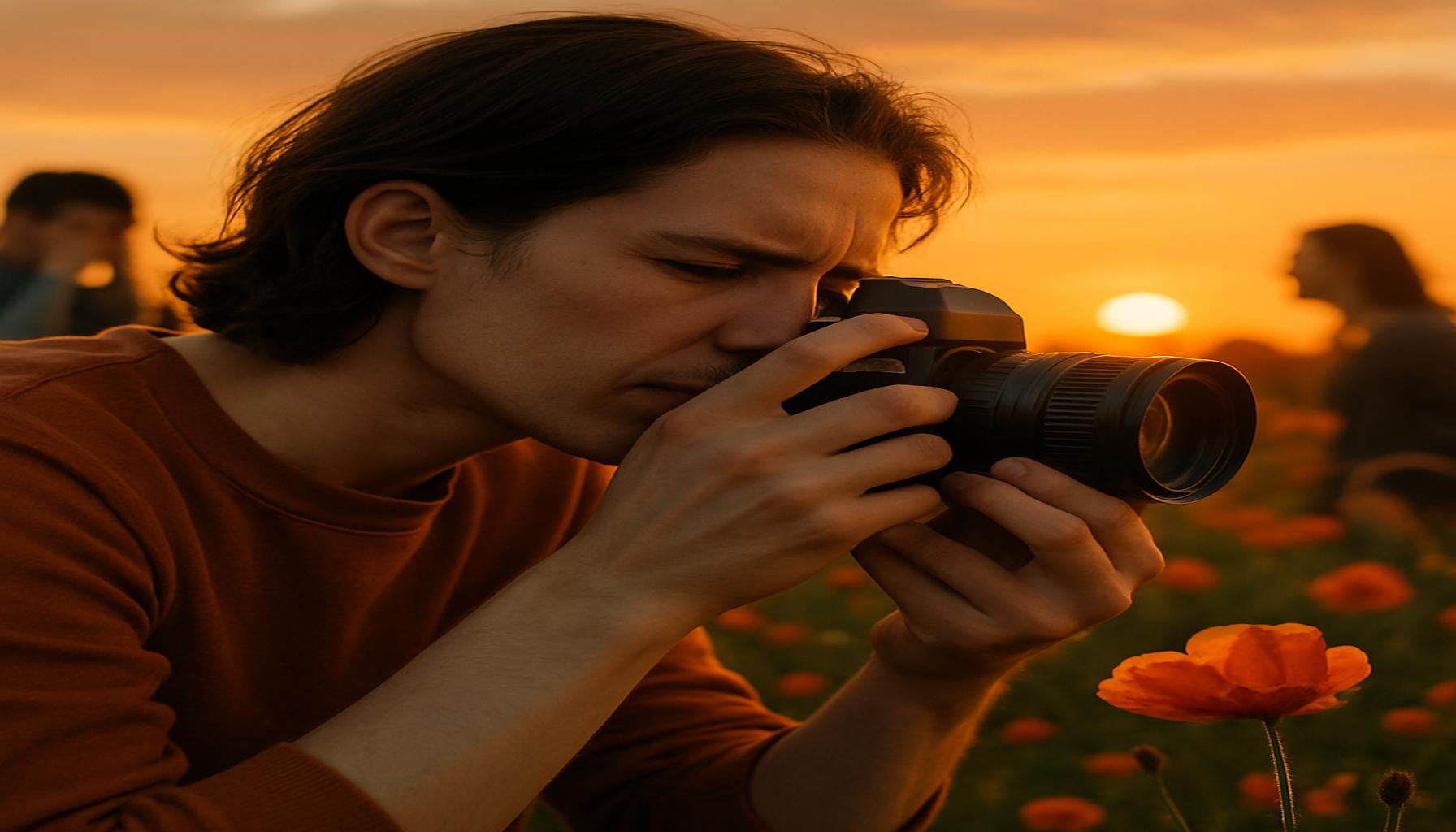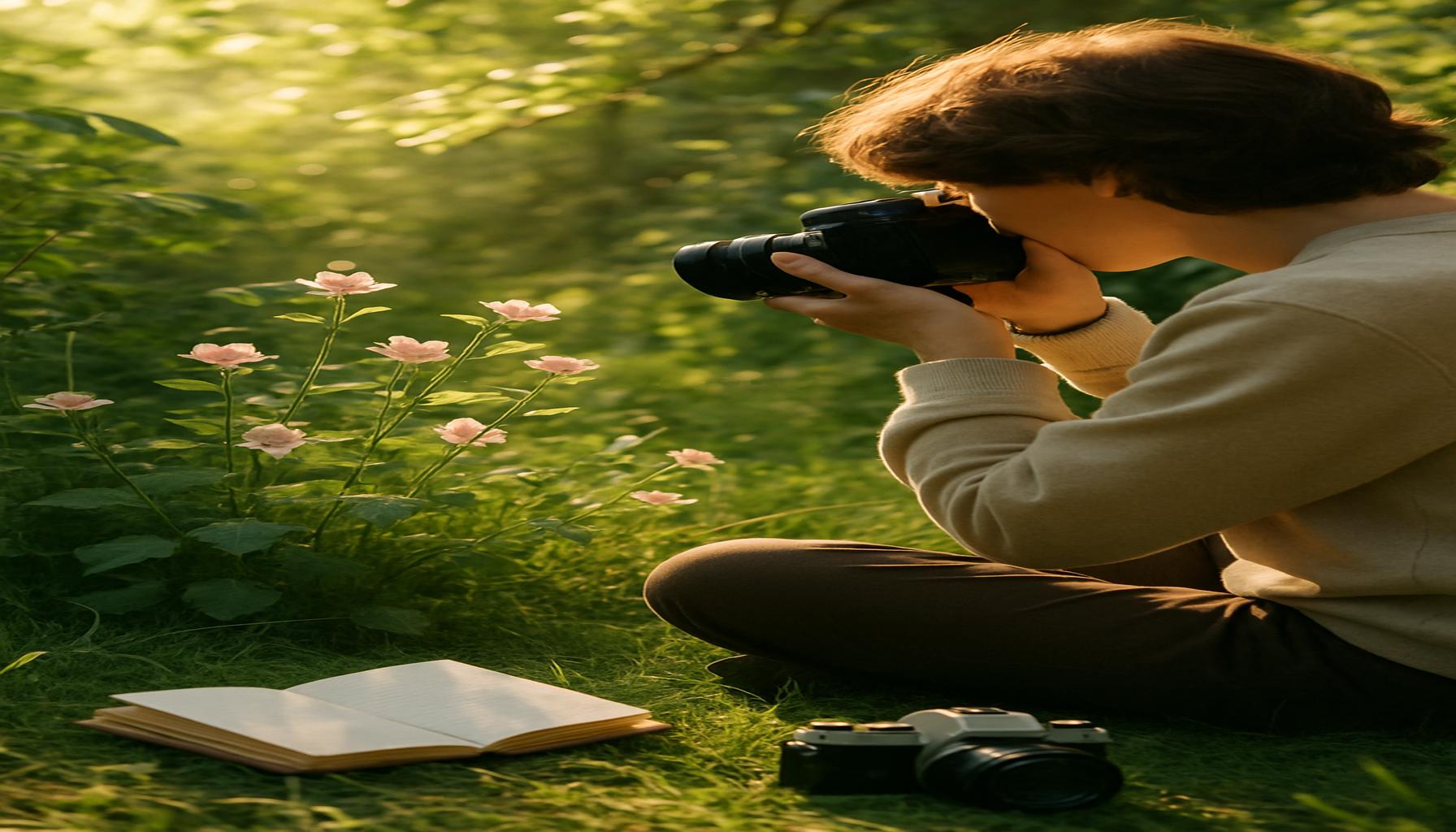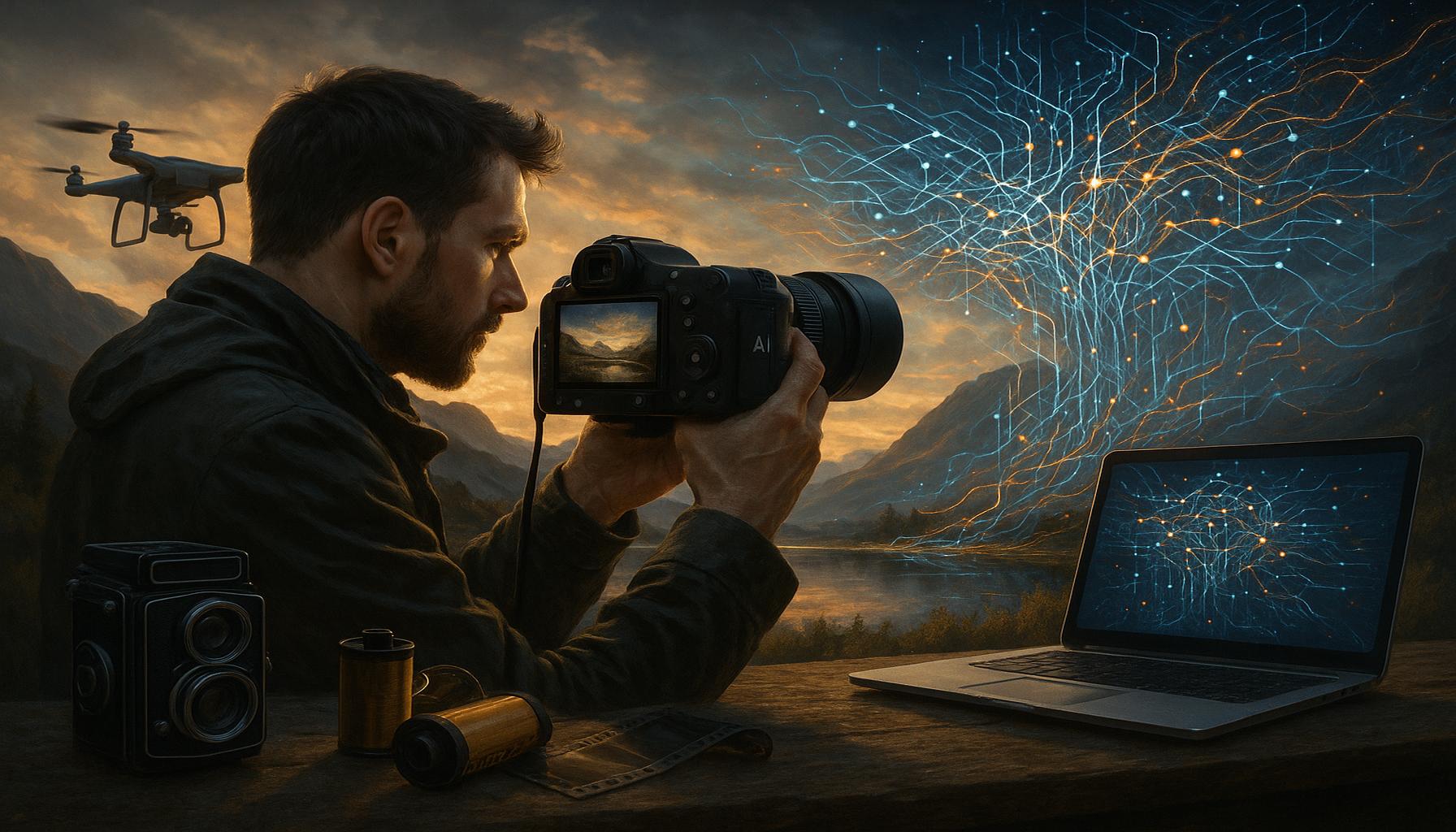Abstract Photography: Exploring Creativity and Personal Interpretation in Visual Art
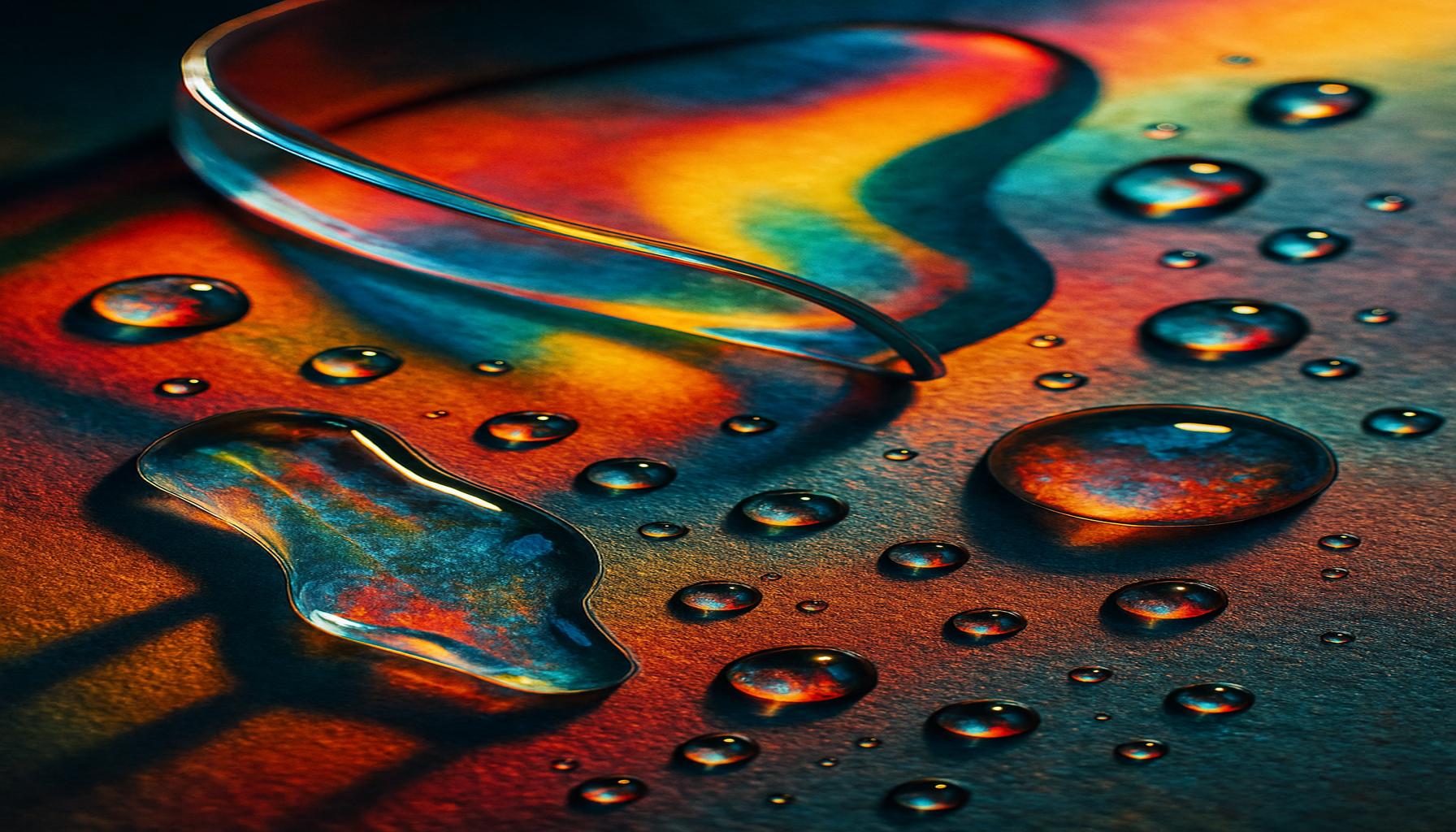
Exploring the Depths of Abstract Photography
Abstract photography invites a unique perspective on the world, allowing artists and viewers to engage with imagery in profoundly personal ways. This genre transcends traditional representation, focusing instead on colors, shapes, and forms that invoke emotion and provoke thought. It encourages a journey into the depths of one’s imagination, revealing the beauty hidden in ordinary subjects.
At its core, abstract photography emphasizes the visual and emotional essence of a subject rather than providing a realistic portrayal. For instance, a close-up shot of a rippling pool of water may reveal mesmerizing patterns and textures that evoke feelings of serenity and introspection, rather than simply showcasing the water itself. In this genre, the composition and interplay of elements matter more than the literal depiction; it is the essence of the moment that takes center stage.
- Focuses on the essence rather than realistic portrayal
- Encourages exploration of textures, shadows, and light
- Stimulates personal interpretation, allowing individual viewers to derive their meanings
Abstract photography is not merely about the image; it is about the experience it creates. Through this lens, photographers are encouraged to explore various elements such as light and shadow, which can dramatically change the mood of a piece. For example, a photograph capturing the dappled sunlight filtering through tree leaves can convey a sense of peace and tranquility, highlighting nature’s calming influence. Conversely, dark shadows might instill feelings of mystery or tension, prompting viewers to question what lies beyond the frame.
Moreover, abstract photography can be particularly compelling in urban environments. By focusing on geometric shapes of buildings, reflections in glass, or patterns made by streets, photographers can transform the usual hustle and bustle of city life into striking visual narratives. An image highlighting the symmetry between skyscrapers, for instance, can speak volumes about modernity and human ingenuity.
The genre also engages deeply with the theme of chaos versus tranquility. Consider how a busy street scene, when blurred or abstracted, might evoke a sense of overwhelming motion, contrasting starkly with a serene landscape’s peaceful representation. This juxtaposition can reflect broader life themes, encapsulating the balance we often seek amidst the turmoil of life.
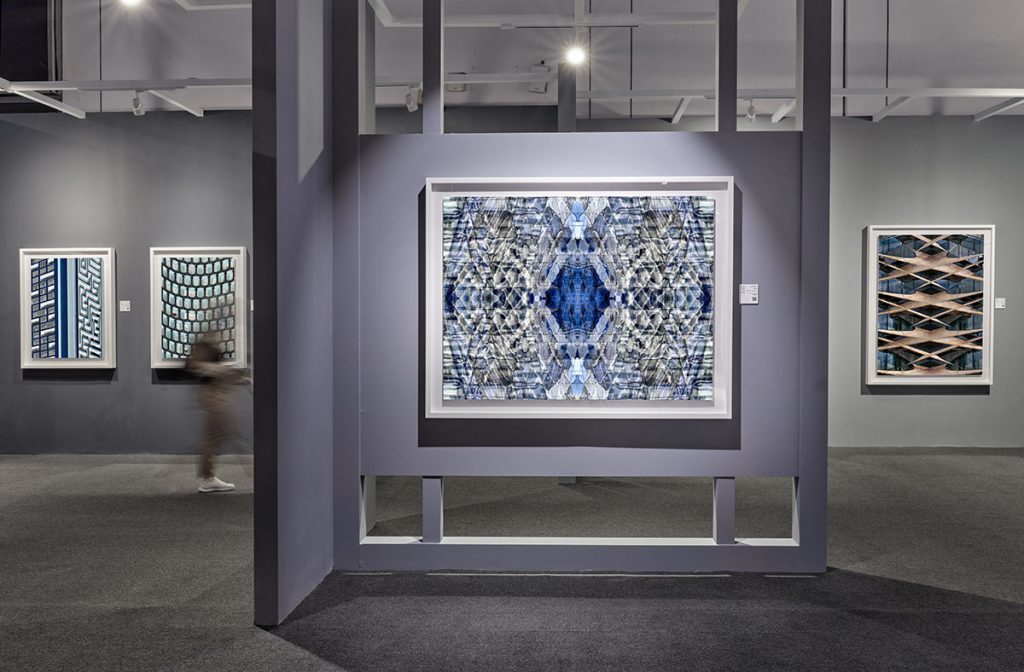
Abstract photography holds significant value in today’s artistic landscape, as it invites viewers to engage with art on a highly personal level. It encourages individuals to confront their emotions and interpretations, allowing for diverse understandings based on personal experiences. This openness to interpretation not only fosters creativity but also strengthens the emotional connections that art can create. As we continue to explore this intriguing art form, it becomes increasingly clear that abstract photography is a powerful medium that can transform our perceptions of the world around us.
DISCOVER MORE: Click here to dive deeper
The Creative Process Behind Abstract Photography
At the heart of abstract photography lies a creative process that transcends technical skill, urging the photographer to delve deeper into their own thoughts and feelings. This art form does not rely solely on subject matter but instead focuses on the relationship between elements within the frame. The act of capturing an abstract photo is akin to painting with light, where each shutter click offers the opportunity to evoke particular sensations, allowing viewers to engage with the image on a visceral level.
One intriguing aspect of abstract photography is how it stimulates the artist’s imagination. Photographers often find inspiration in everyday environments, from the textures of peeling paint on an old wall to the delicate shadows cast by a single flower. By utilizing specific techniques, such as long exposure or macro photography, they can transform an ordinary scene into something extraordinary. The play of colors and shapes can give rise to an emotional narrative that prompts the audience to interpret the visual story presented before them.
- Technique Variety: Experimenting with different camera settings can uncover unique interpretations. High contrast and low depth of field can lead to surprising outcomes.
- Perspective Shifts: Changing the angle of photography can yield different abstractions. A photograph taken from above may reveal a new dynamic, transforming a mundane object into a captivating photoscape.
- Post-Processing: Digital manipulation plays a critical role, as photographers can enhance or alter colors and textures in software to achieve the desired effect, further pushing the boundaries of perception.
Exploring color theory also plays a significant role in abstract photography. Colors communicate emotions and stir the viewer’s feelings; a vibrant palette can convey energy and excitement, while muted tones often suggest calm and introspection. Photographers often study how various colors play off one another, using this knowledge to elicit emotional responses. A composition filled with greens and blues may evoke tranquility, reminiscent of serene landscapes, while bold reds and oranges can ignite passion and urgency.
Furthermore, the relationship with light is crucial in both creating and interpreting abstract images. Natural light can provide softness and warmth, whereas artificial light sources can introduce sharp contrasts or dramatic shadows, each impacting the overall tone of the photograph. For instance, a low-angle shot of the sun setting behind a building can create intriguing silhouettes that elevate the narrative quality of the image, allowing for multiple interpretations.
Through the fusion of technique, color, and light, abstract photography not only serves as a conduit for creativity but also acts as a mirror reflecting the artist’s perspective and emotions. This transformative process encourages engagements that resonate differently with each viewer. As we continue our exploration of this captivating genre, we will uncover how personal experiences shape the interpretations and the emotional connections established with abstract imagery.
| Aspect | Details |
|---|---|
| Creative Freedom | Abstract photography encourages artists to express their unique vision without constraints. |
| Personal Interpretation | The genre allows viewers to engage and derive meaning based on their own experiences and perspectives. |
Abstract photography is not just an art form; it is a passage into the inner workings of the mind. The balance of shapes, colors, and textures can create a narrative that encourages the audience to explore their emotions and thoughts. Artists often utilize unconventional techniques, such as blurring, layering, and manipulation of light, fostering a sense of mystery and intrigue that traditional photography may not convey.Moreover, the personal connection that viewers form with abstract pieces can be profound. Each interpretation reveals layers akin to a psychological canvas, where one image may evoke a sense of peace for some and chaos for others. This diversity in perception is a hallmark of abstract photography, inviting dialogue and reflection amid varying individual experiences. As the boundaries of creativity expand, the genre continues to captivate and innovate in the realm of visual artistry.
DIVE DEEPER: Click here to discover vibrant watercolor techniques
The Role of Personal Experience in Abstract Photography
One of the most compelling aspects of abstract photography is how personal experiences dramatically shape the photographer’s vision and creative output. Memories, emotions, and individual interpretations intertwine to form a unique artistic language that resonates through each image. For photographers, every click of the shutter is influenced by their backgrounds, cultural contexts, and life stories, providing an intimate glimpse into their inner worlds.
Take, for instance, the work of renowned abstract photographers like Joan Fontcuberta and David Hockney. Their respective interpretations of abstraction draw deeply from their engagement with art history, personal narratives, and cultural identity. Fontcuberta often integrates themes of deception and reality, inviting viewers to question the authenticity of the images they encounter. Hockney, on the other hand, employs vibrant color and fractured compositions, reflecting his experiences with space and perception. Both artists illustrate how personal context not only informs their artistic choices but also enhances the audience’s engagement with their work.
Moreover, abstract photography acts as a platform for artists to explore complex themes such as identity, memory, and emotional landscapes. The abstraction allows the viewer to project their interpretations onto the visual elements, fostering a dialogue between the artist’s intent and the viewer’s perspective. For example, a photograph depicting a series of blurred figures may evoke feelings of isolation and anonymity for one viewer, while another may see it as a representation of the swift passage of time and ephemeral moments. Such dualities underscore the profound personal interpretations that are woven into the fabric of abstract photography.
To deepen this connection, many photographers actively engage in the practice of journaling or creating visual diaries, where they document their thoughts and feelings as they create a body of work. This practice not only enriches the creative process but also provides insight into the artist’s motivations and emotional landscapes. As a result, each photograph becomes a visual narrative, telling a story beyond the captured moment and serving as a reflection of the artist’s emotional state during its creation.
Additionally, workshops and community art projects often aim to encourage collaboration among photographers, allowing for shared experiences and collective interpretation. By working alongside peers, photographers gain new perspectives that evolve their understanding of abstract imagery and reinforce the significance of collaboration as a catalyst for creativity. These interactions can produce unexpected blends of style and vision, resulting in works that challenge traditional notions of authorship and creativity.
As we traverse this intricate landscape of emotional connections and personal experiences, it becomes evident that abstract photography extends beyond mere visuals. It encapsulates a profound language of feeling, wherein each photographer’s unique interpretation serves not only as a reflection of themselves but also as an invitation for viewers to engage with and investigate the work on their own personal levels. The beauty of abstract photography lies in its ability to forge a bond between artist and audience, transcending boundaries and allowing for a shared exploration of the human experience.
DISCOVER MORE: Click here to dive deeper into the world of musical collaboration
Conclusion
In conclusion, abstract photography stands as a compelling medium that invites both artists and viewers to engage in a profound exploration of creativity and personal interpretation. This art form liberates photographers from traditional constraints, offering a space to express their unique narratives through a complex interplay of colors, shapes, and forms. As we have seen, the emotional and personal layers embedded in abstract imagery create a dialogue that transcends mere aesthetics, allowing each image to resonate with viewers on individual levels.
The value of abstract photography lies not only in the diverse expressions it embodies but also in its capacity to cultivate connections. As photographers draw upon their life experiences, cultural backgrounds, and emotional landscapes, they craft visual stories that speak to universal themes of identity, memory, and the essence of human existence. This invitation for interpretation fosters a rich, interactive experience for the audience, enhancing the impact of the artwork.
Moreover, collaborative efforts through workshops and community projects further highlight the dynamic nature of this artistic endeavor, demonstrating that the journey of abstract photography often thrives on shared experiences. The blend of various perspectives creates a vibrant tapestry of ideas, edging closer to the collective human experience.
As we navigate the diverse realms of abstract photography, it becomes increasingly clear that this art form is more than just a visual spectacle; it is a lens through which we can explore our shared emotional landscapes. Those who engage deeply with abstract photography will likely find themselves not only reflecting on the artist’s vision but also discovering new nuances within their own interpretations and emotional responses. Therefore, this exploration invites continual questioning and dialogue, encouraging a broader understanding of the intricate connections that unite art, emotion, and human experience.

